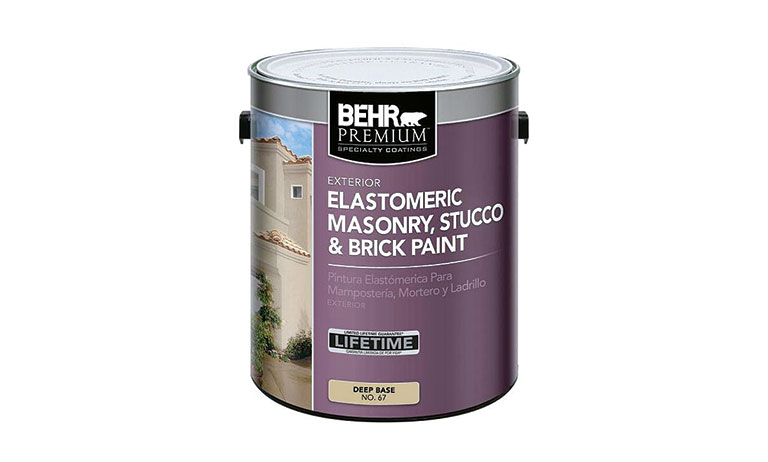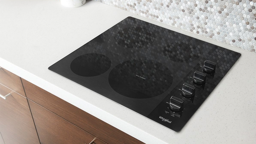Before you buy in, make sure you know the pros and cons of of elastomeric coatings

Here is a 25-cent word to know so you can cut down your cabin-time dedicated to combating the forces of nature, especially water. Elastomeric is a fancy way to say stretchy. Elastomeric coatings offer an alternative to exterior paint in many situations. They apply like paint but contain more solids, which give them greater flexibility and durability than traditional exterior paint. In fact, you might think of an elastomeric coating as acrylic paint on steroids. Originally formulated to protect stucco, elastomeric coatings can be used in many places traditionally reserved for exterior paint. These would include masonry and concrete surfaces, flat or low-sloped roofs and even wood or log siding. Their elastic properties and durability make them great for long-term protection for cabin exteriors.
See also Building a Small Cabin Shed Elastomeric coatings go on like paint via brush, roller or sprayer. The resultant coating is typically 5-10 times thicker than paint and with the ability to stretch 150-400%. However, to avoid some potentially serious problems and enjoy the benefits of extended life and superior water repellence on your cabin’s exterior, there are some things you should know.
Elastomeric Coatings 101
Where to use: Use elastomeric coatings on exterior elements, such as roofs, concrete walls and floors, masonry, stucco, (originally formulated for stucco) or wood.
Cautions: Be careful when using it on wood siding or logs, which need to breathe. Any breach in the coating, however small, can lead to moisture getting to the wood, leading to decay, mold growth and further damage. If applying over wood, do not seal the wood completely. Allow a way for wood to dry. If the coating is confined to the exterior surface, wood can still dry toward the inside, providing there isn’t an inside vapor barrier. The key is to prevent trapping moisture in the wood.
See also Tips for Buying a Waterfront Cabin Preparation: Elastomeric coatings penetrate very little, so surfaces should be prepared carefully. Fill cracks, dents, holes and voids with an appropriate filler. Be sure concrete, masonry and stucco are thoroughly cured and dry before applying.
Application: More than one coat may be necessary, even when advertising claims one-coat coverage. If the finished coating looks like latex paint, it may be too thin. If applied with a sprayer, you should back roll coats before re-coating.
Advantages: Some hybrid coatings combine the properties of an elastomeric with acrylic paint. Longer lifespan means fewer applications. Manufacturers often offer longer warranties.
Disadvantages: Higher cost may lead to the temptation to skimp. Holes or breaks in the coating may lead to moisture penetration that can cause long-term damage. Some coatings require primer or a base coat. Thickness may give a rubberized or plastic appearance.
About the author Jim Cooper, a former home builder and General Contractor, is author of “Log Homes Made Easy” and “The Log Home Project Planner.” He is a LEED Accredited Professional and Certified Passive House Consultant.
 Here is a 25-cent word to know so you can cut down your cabin-time dedicated to combating the forces of nature, especially water. Elastomeric is a fancy way to say stretchy. Elastomeric coatings offer an alternative to exterior paint in many situations. They apply like paint but contain more solids, which give them greater flexibility and durability than traditional exterior paint. In fact, you might think of an elastomeric coating as acrylic paint on steroids. Originally formulated to protect stucco, elastomeric coatings can be used in many places traditionally reserved for exterior paint. These would include masonry and concrete surfaces, flat or low-sloped roofs and even wood or log siding. Their elastic properties and durability make them great for long-term protection for cabin exteriors. See also Building a Small Cabin Shed Elastomeric coatings go on like paint via brush, roller or sprayer. The resultant coating is typically 5-10 times thicker than paint and with the ability to stretch 150-400%. However, to avoid some potentially serious problems and enjoy the benefits of extended life and superior water repellence on your cabin’s exterior, there are some things you should know.
Here is a 25-cent word to know so you can cut down your cabin-time dedicated to combating the forces of nature, especially water. Elastomeric is a fancy way to say stretchy. Elastomeric coatings offer an alternative to exterior paint in many situations. They apply like paint but contain more solids, which give them greater flexibility and durability than traditional exterior paint. In fact, you might think of an elastomeric coating as acrylic paint on steroids. Originally formulated to protect stucco, elastomeric coatings can be used in many places traditionally reserved for exterior paint. These would include masonry and concrete surfaces, flat or low-sloped roofs and even wood or log siding. Their elastic properties and durability make them great for long-term protection for cabin exteriors. See also Building a Small Cabin Shed Elastomeric coatings go on like paint via brush, roller or sprayer. The resultant coating is typically 5-10 times thicker than paint and with the ability to stretch 150-400%. However, to avoid some potentially serious problems and enjoy the benefits of extended life and superior water repellence on your cabin’s exterior, there are some things you should know.










